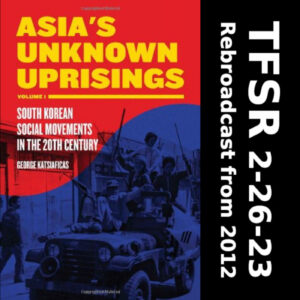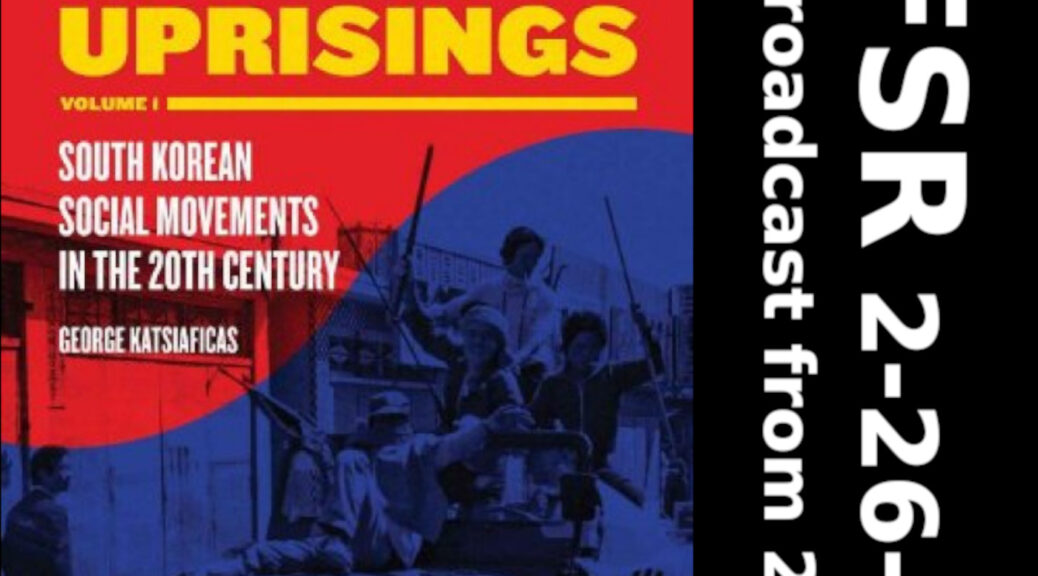South Korean Social Movements in the 20th Century (rebroadcast)
[ 00:02:09 – 00:50:03 ]

This week we’re re-airing our 2012 interview with Dr. George Katsiaficas, author and contributor to over a dozen books on Peoples Movements and the elucidator of the Eros Effect. For over a decade, Dr. Katsiaficas has been studying the culture and history of South Korea and it’s culture and has published the a two volume set, the first of which is entitled Asia’s Unknown Uprisings: South Korean Social Movements in the 20th Century from PM Press.
For more of Dr. Katsiaficas’ writing, check out his website at www.eroseffect.com
Shine White
[ 00: 56.41 – 01:19:33 ]
Supporters of Joseph “Shine White” Stewart conducted an interview with him about conditions in the NC prisons, violence and his views on organizing. Shine White is an anti-racist, white, maoist prisoner.
You can find our 2021 interview with Shine White here.
You can write to Shine White at:
Joseph Stewart #0802041
Granville Correctional
PO Box 247
Phoenix, Maryland 21131
. … . ..
Featured Tracks:
- Bella Ciao by Anita Lane from Sex O’Clock
- Korean Protest Song by Resist and Exist from the Korean Protest Song EP

